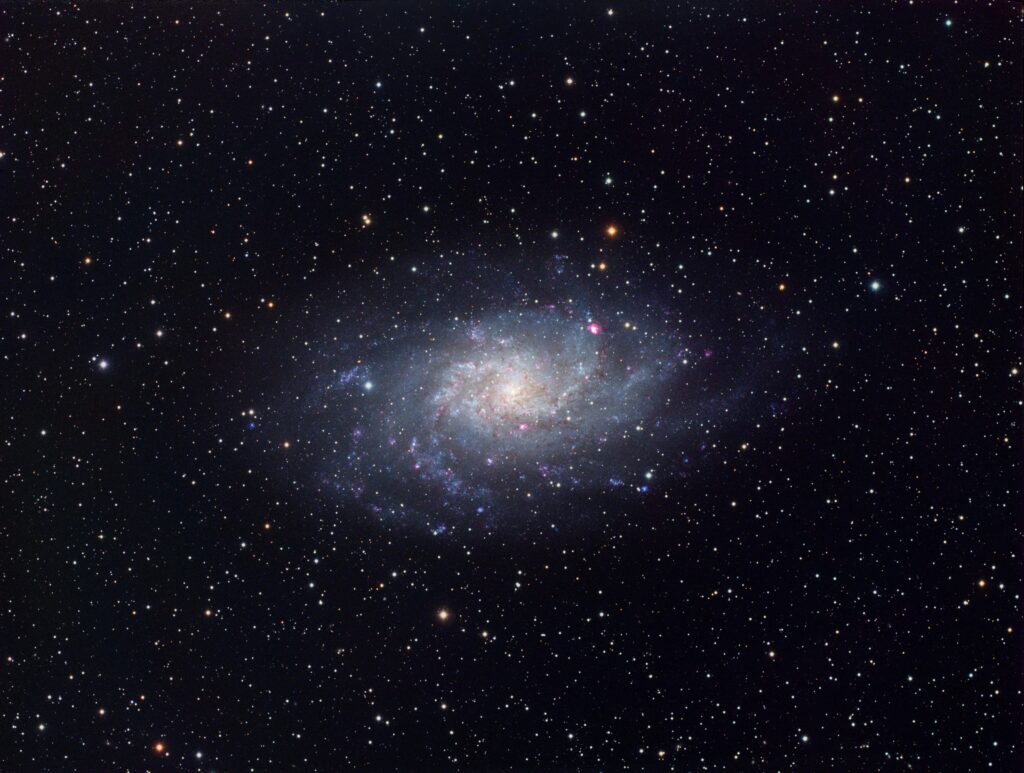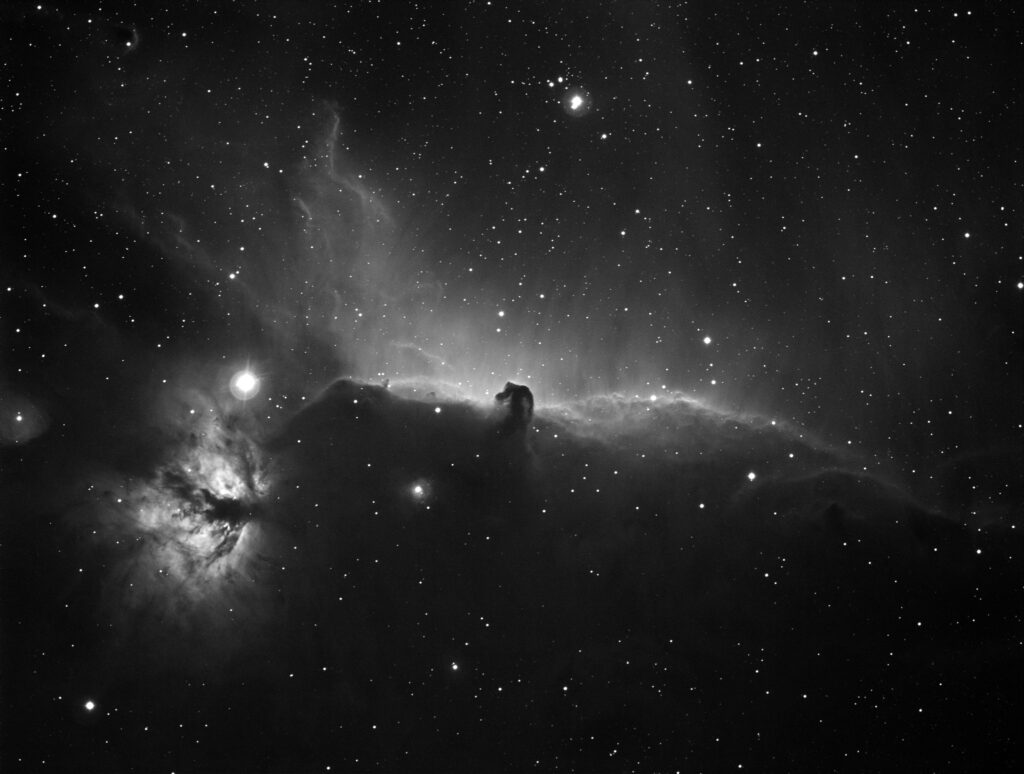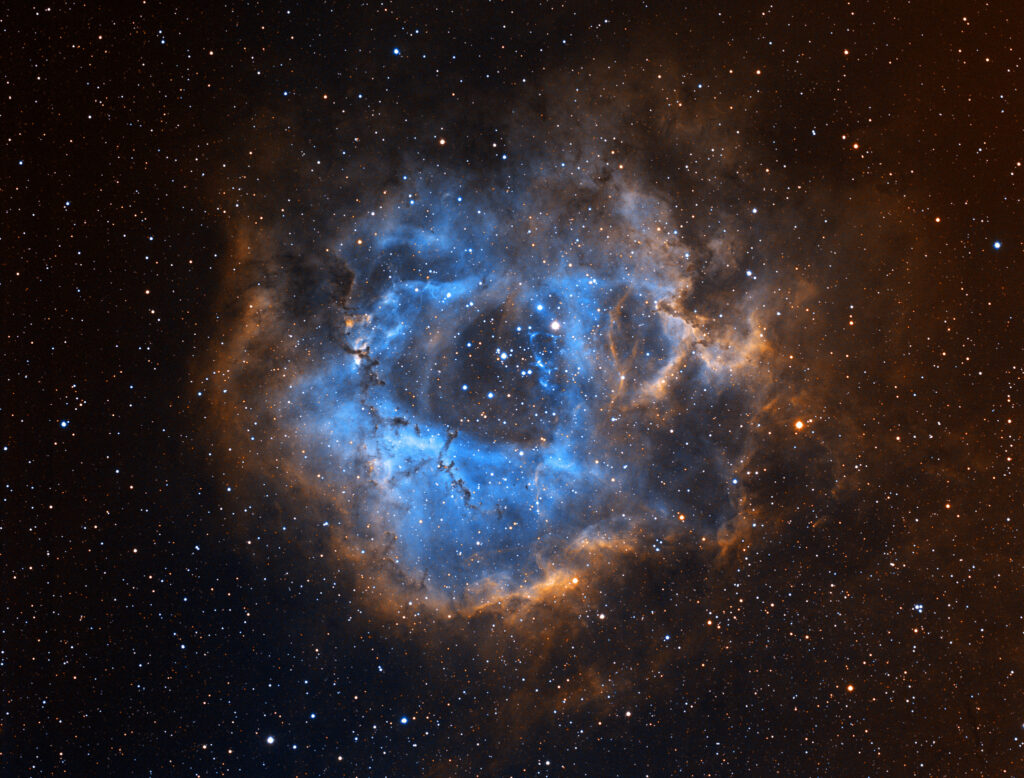M42 The Orion Nebula
I’m pretty amazed how nice this one came out. I started the image really late in the season so by 9pm I would already be doing a meridian flip. Plus weather and mount issues (tracking on the west side), made this one a challenge.
- Taken from a Bortle 5 suburban back yard.
- Takahashi FSQ-106EDX4 at f/3.6 with the CR Reducer 0.73x.
- SBIG ST-8300M at 1×1 binning, with the FW5-8300 5 position filter wheel. (The halos around brighter stars are due to the camera)
- IDAS LPS-D3 36mm unmounted filter for luminance and Astronomik Deep-Sky 36mm unmounted RGB filters.
- Losmady G11 Gemini 2, guided with a piggybacked AstroTech 65EDQ and an Orion StarShoot autoguider.
- Software included PHD2 for guiding, Sequence Generator Pro for acquisition, and PixInsight for image processing.
- 70 x 300s luminance integrations (IDAS LPS-D3)
- 70 x 300s each red, green and blue filters
Total exposure time of just over 23 hours





